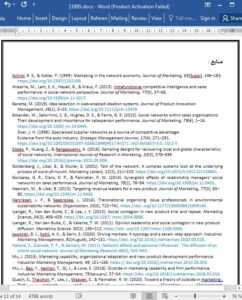Abstract
The theory of Outside-in marketing (OIM) emphasizes the importance of internal and external partners of a firm to drive strategies for value creation. OIM is based on four key tenets: market sensing and responses, segmentation and targeting, innovation, and employee's learning effort. With this commentary, we apply the theory of OIM to network analysis. By doing so, we identify key stakeholder networks as part of a firm's business ecosystem and discuss the value that can be extracted from different stakeholder networks. Most prior network research in marketing has mainly used customer or employee network data while neglecting other important stakeholder groups. We provide information about how network analysis of stakeholder data can fill gaps in the marketing literature and provide firms with essential knowledge, economic value, and influence over external partners, and improve the value generation process. We first describe each tenet and give examples of stakeholder networks that can be investigated within the realm of the tenet definitions. We then discuss different challenges that social network research can pose, and end with future research questions that can be explored for empirical research studies.
1. Introduction
Historically, firms have been focused more on an inside-out or product-centric approach to marketing with a prevailing belief that utilizing their resources and capabilities would lead to value creation for the firm. More recently, however, there has been a push by marketing academics and practitioners to take an outside-in or customer-centric approach within the marketing function of a firm with a prevailing belief that the relationship with the customer and external partners can be the start of the value creation process for the firm (Jaworski, Kohli, & Sarin, 2020; Mu, 2015; Mu, Bao, Sekhon, Qi, & Love, 2018; Quach, Thaichon, Lee, Weaven, & Palmatier, 2020). What has been lacking in the marketing literature, though, is an underlying theoretical framework that can be used as a foundation for understanding and empirically testing the value of customer-centricity.











